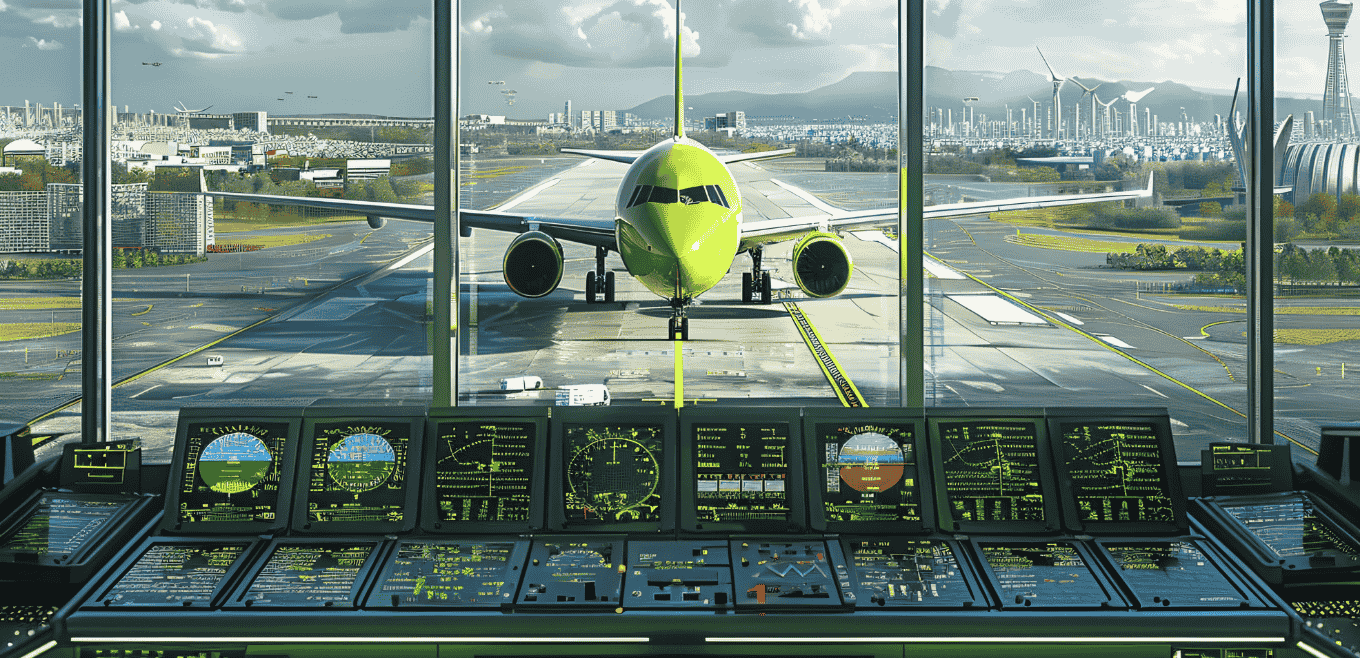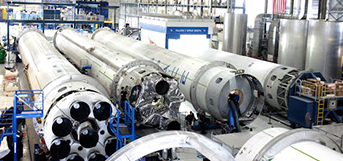Cloud computing is the hottest trend in corporate computing right now. As airlines face increasing pressure to modernize their operations, cloud technology offers a game-changing solution. By leveraging the power of the cloud, airlines can streamline their operations, reduce costs, and provide better experiences for passengers.
From improving operational efficiency to enhancing customer satisfaction, cloud computing is pivotal in reshaping the future of air travel. But how exactly is this transformation taking place? Let’s explore how cloud technology is revolutionizing aviation.
As per market research, the aviation cloud market size is expected to grow at a CAGR of 12.5% by 2030.
The Changing Landscape of the Aviation Industry
The aviation industry is undergoing a massive shift driven by challenges and technological advancements. Airlines today grapple with hurdles like outdated infrastructure, increasing fuel prices, and the pressure to enhance customer experience. These challenges aren’t just about staying afloat—they’re about staying competitive in an industry that’s evolving faster than ever.
That’s where digital transformation becomes a necessity. The adoption of cloud computing can help airlines tackle these issues head-on. Imagine accessing and analyzing real-time data on flight routes, fuel efficiency, or customer preferences—all in seconds. With cloud computing, airlines can do just that, transforming everything from flight management to passenger services.
For a deeper dive into the benefits of cloud computing and how it’s helping industries beyond aviation, be sure to check out our detailed blog. It highlights how cloud technology makes a real difference in reducing costs, increasing scalability, and unlocking new business opportunities!
Key Cloud Technologies Revolutionizing Aviation
Cloud computing is bringing a whole new set of tools to the aviation industry, and the key technologies making a big impact are pretty exciting!
1. Cloud Storage and Scalability
Gone are the days of airlines relying on bulky, on-site servers for storing critical data. With cloud storage, airlines now have unlimited space to store everything from flight records to customer data, without worrying about running out of storage. Plus, scalability means they can easily expand or reduce their storage needs depending on demand, making it far more cost effective than traditional methods.
2. Artificial Intelligence (AI) and Machine Learning (ML) Integration
Imagine AI helping airlines predict the best flight routes, adjusting schedules based on weather patterns, or even enhancing the customer experience through personalized recommendations. Machine learning algorithms can process huge amounts of data, learning and evolving in real-time to make smarter decisions. Whether optimizing fuel consumption or analyzing customer preferences, AI and ML make everything more efficient and personalized.
3. Internet of Things (IoT) in Aviation
IoT technology connects devices and systems, allowing them to communicate and share data. In aviation, this means planes, airports, and even luggage are now equipped with sensors that provide real-time information. For instance, sensors on a plane can alert the airline to mechanical issues before they become critical, improving safety and maintenance scheduling. IoT is revolutionizing everything from luggage tracking to aircraft monitoring.
Cloud-Enabled Innovations in Aviation
Cloud computing isn’t just changing how airlines manage data and enabling new, game-changing innovations that improve safety, efficiency, and the overall flying experience.
1. Predictive Maintenance and Flight Safety
With cloud-powered predictive maintenance, airlines can stay ahead of potential problems. By analyzing data from various sensors, airlines can predict when a part of the aircraft might need repair or replacement before it breaks down. This leads to fewer unscheduled maintenance stops, safer flights, and more efficient use of resources.
2. Smarter Air Traffic Management
Managing air traffic is one of the most complex tasks in aviation, but with the cloud, it’s getting much smarter. Cloud-based systems for air management can process vast amounts of real-time data about weather, air traffic, and flight routes. This helps air traffic controllers make faster, more accurate decisions, reducing delays and improving overall efficiency in the sky.
3. Remote Aircraft Management and Monitoring
In today’s world, airlines can remotely monitor and manage their fleets from anywhere. With cloud solutions, they can track aircraft performance, monitor fuel levels, and even adjust flight plans from the ground. Remote management makes responding quickly to issues easier, improving flight planning and enhancing safety by maintaining constant communication between the aircraft and ground crews.
By partnering with People10, you get scalable cloud-native development, an enterprise application that integrates predictive maintenance, smarter air traffic management, and remote fleet monitoring. This solution not only enhanced flight operations but also improved customer communication and compliance.
Want to Enhance Communication and Reduce Errors by 60%?
Discover how with People10’s cloud-powered solutions.
Cost Savings and Operational Efficiency with Cloud Adoption
Reduced Infrastructure and Maintenance Costs
Migrating to the cloud reduces the need for costly on-site infrastructure and server maintenance. Airlines only pay for what they use, eliminating wasted expenditures and reducing overall costs.
Streamlined Operations and Faster Decision-Making
Cloud systems provide real-time data, enabling airlines to make faster, more informed decisions. Enhanced operational agility improves everything from crew management to flight routing, leading to fewer delays.
Scalability for Growth
The cloud enables airlines to scale their operations without worrying about physical infrastructure constraints. Airlines can grow their operations while maintaining high performance and flexibility.
Challenges and Considerations in Cloud Adoption
Security and Compliance Concerns
Ensuring that cloud systems meet industry security standards is a major challenge for airlines adopting cloud technology. With sensitive data, such as passenger information, flight details, and payment data, at risk, airlines must implement robust security measures. This includes encryption, multi-factor authentication, and continuous monitoring. Additionally, compliance with regulatory frameworks such as GDPR and HIPAA is crucial to avoid legal liabilities, making it essential for airlines to work with cloud providers who meet industry-specific standards and can guarantee the security of their data.
Data Privacy Regulations and Cloud Governance
Cloud adoption raises significant concerns about data protection. Airlines handle vast amounts of personal data, and with varying privacy laws across different regions (e.g., GDPR in Europe and CCPA in California), they must ensure full compliance. Cloud providers must offer transparent governance policies, including how data is stored, accessed, and processed. Any lapses in data privacy could result in fines, legal issues, and damage to an airline’s reputation, making effective data management and governance a top priority.
Integration with Legacy Systems
Many airlines operate with legacy systems that may not easily integrate with modern cloud-based solutions. This can present compatibility challenges when trying to transfer data and processes to the cloud without interrupting operations. Ensuring smooth cloud migration from legacy to cloud systems often requires time, resources, and a thorough understanding of both the old and new technologies. Proper planning and testing are crucial to prevent operational disruptions during the transition.
Cost Management
Although cloud adoption is often seen as a cost-saving solution, it can lead to unexpected expenses if not properly managed. The flexibility of cloud systems allows for scalability, but it also means airlines might struggle to predict and control costs without the right monitoring tools. Airlines must establish clear budgeting processes and continuously track cloud resource usage to avoid overspending. Effective cost management is critical for ensuring that the move to the cloud delivers financial benefits in the long term.
Downtime and Reliability
Airlines rely on continuous uptime for operations, and any downtime during migration to the cloud or outages from cloud providers can disrupt flight schedules and customer services. Cloud providers generally offer high levels of reliability, but airlines need to have contingency plans in place for potential downtime. Additionally, a robust disaster recovery strategy should be implemented to ensure quick recovery in case of a failure, maintaining business continuity and minimizing service interruptions.
Vendor Lock-In
Relying on a single cloud provider for all services can lead to vendor lock-in, where airlines become dependent on one vendor’s technology and pricing model. This can limit flexibility, making it difficult to switch providers or adapt to changing business needs. To mitigate this risk, airlines should carefully assess their cloud strategy, considering multi-cloud or hybrid-cloud approaches that allow greater flexibility and reduce the risks associated with being tied to one vendor’s ecosystem.
Future of Cloud Computing in the Aviation Industry

As the aviation industry continues to evolve, cloud computing will be instrumental in shaping its future. Emerging technologies, particularly in the realms of AI, and hybrid cloud solutions, are set to accelerate cloud adoption and revolutionize how airlines manage operations, optimize flight routes, and enhance the customer experience. Here are the key trends driving this transformation:
1. AI and Machine Learning Integration
The fusion of AI and cloud computing is transforming operational efficiency in aviation. By leveraging machine learning models and advanced AI algorithms, airlines can optimize flight routes, improve predictive maintenance, and enhance customer service with tailored experiences. Real-time data processing in the cloud ensures these intelligent systems can scale quickly and accurately, providing insights that help airlines make smarter, faster decisions. With AI and machine learning systems integrated into cloud infrastructures, airlines can unlock significant value, driving operational improvements and predictive insights.
2. Hybrid Cloud Solutions
The future of cloud computing in aviation lies in the adoption of hybrid cloud models. By combining the flexibility of public clouds with the security and control of private clouds, airlines can enjoy the best of both worlds. Hybrid clouds allow airlines to store sensitive data on private platforms while utilizing public clouds for scalability and cost-efficiency. This model supports the seamless integration of legacy systems and modern cloud solutions, ensuring that airlines can scale operations without sacrificing security or performance.
3. Internet of Things (IoT) in Aviation
The integration of IoT in aviation is set to revolutionize how airlines monitor and manage their fleets. IoT sensors across aircraft and operational systems generate vast amounts of data, which cloud computing platforms can store, analyze, and process in real time. This enables airlines to track aircraft performance, monitor fuel levels, predict maintenance needs, and optimize flight routes, all from a central cloud platform. By leveraging the full potential of IoT data in the cloud, airlines can enhance safety, operational efficiency, and customer satisfaction.
4. Generative AI (Gen AI) in Aviation
One of the most exciting developments in the aviation industry is the integration of generative AI. By leveraging cloud-powered Gen AI, airlines can create highly optimized flight schedules, simulate operational scenarios, and automate many routine tasks, thereby reducing operational costs and improving agility. The cloud infrastructure offers the computational power required to run complex generative models at scale, enabling airlines to adapt quickly to shifting demands and maintain seamless operations.
Conclusion
Embracing cutting-edge technologies like AI, big data, and IoT, powered by cloud computing, is transforming the aviation industry. Cloud computing provides airlines with the scalability, security, and flexibility they need to stay ahead in a competitive landscape. From improving operational efficiency and enhancing safety to delivering a more personalized experience for passengers, the potential is immense.
At People10, we understand the unique challenges airlines face in today’s fast-paced world. We’re here to help you navigate the complexities of cloud adoption with our expertise, ensuring that your operations are seamless, secure, and future-ready. Let us be your trusted partner in driving innovation and success in the evolving aviation industry.
Want to Slash 50% of Operational Delays?
Transform your aviation processes with People10’s innovative cloud solutions.
Author
Kamal Chauhan excels in DevOps and automation, focusing on infrastructure and application deployment solutions. He designs and implements automated deployment pipelines for diverse applications and sectors.



